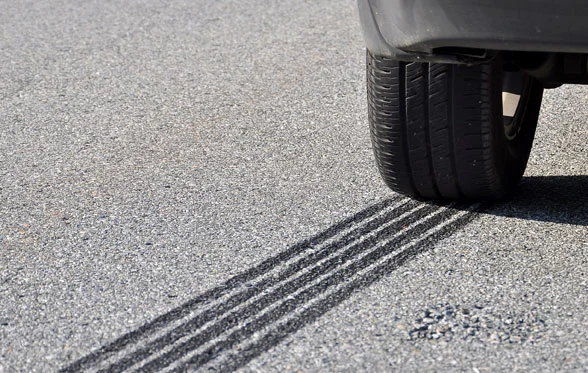According to an analysis of road traffic accident statistics carried out on behalf of the European Commission, driver fatigue is a contributory factor in 10-25% of all road traffic accidents which occur in the European Union. For this reason, the fitment of Driver Drowsiness and Attention Warning (DDAW) systems was one of the new safety features identified by the European Commission for inclusion in their updated General Safety Regulation. EU Regulation 2019/2144 on "the type approval requirements of motor vehicles and their trailers, and systems, components and separate technical units intended for such vehicles, as regards their general safety and the protection of vehicle occupants and vulnerable road users", more commonly referred to as General Safety Regulation 2 or GSR 2, requires the mandatory fitment of Driver Drowsiness and Attention Warning (DDAW) systems to all new types of M and N category vehicle (i.e. all passenger carrying and goods carrying motor vehicles) from July 6,2022, and to all new vehicles falling into those categories fromJuly 7, 2024.
Driver Drowsiness and Attention Warning (DDAW) systems are defined in (EU) 2019/2144 as systems that "assess the driver’s alertness though vehicle systems analysis and warn the driver if needed". Over the past few years, the European Commission have developed a new Delegated Regulation to specify the detailed technical requirements and test procedures for Driver Drowsiness and Attention Warning (DDAW) systems and the final version of this new Delegated Regulation, (EU) 2021/1341, was published in the Official Journal of the European Union on August 16, 2021.
Due to the fact that DDAW systems are intended to assess the behavioural characteristics of a human driver, it has not proved possible to adequately determine their effectiveness without utilising human participants in the validation testing. Furthermore, the Delegated Regulation deliberately avoids being technology prescriptive by not specifying which combination of indirect means, e.g. monitoring the steering inputs from the driver, monitoring the vehicle’s road positioning within the lane markings, etc., manufacturers must utilise to determine the alertness of the driver. The combination of these two factors has meant that it was not possible to define one standard set of test procedures which can adequately assess the performance of all DDAW systems. Therefore, this Delegated Regulation adopts a different approach to that used in previous EU Regulations.
The new Delegated Regulation does specify a number of key technical requirements which all DDAW systems must comply with. These include requirements on:
- Operating conditions -Specifying the conditions under which the system must be operable, e.g. the DDAW system must be automatically activated at speeds above 70km/h, the system must operate under both daytime and night time conditions, etc.
- Performance criteria -Specifying the driver drowsiness level at which a warning must be given and giving examples of the criteria that can be used to assess driver drowsiness.
- Driver warnings -Specifying the types and combinations of visual, audible and other warnings that are required/permissible.
- System failure -Specifying the failures within the DDAW system which must be detected and how they must be advised to the driver.
- Roadworthiness testing provisions -Specifying how the correct operational status of the DDAW must be able to be determined during a roadworthiness test.
It is in the testing and compliance demonstration aspects of the new Delegated Regulation where the requirements differ from the approach traditionally followed in other EU Regulations. The approach specified in this new Delegated Regulation is basically as follows:
- Vehicle manufacturers are required to compile a dossier of information containing technical details of their DDAW system and its operation, details of the test procedures used to determine the effectiveness of the DDAW system, their rationale for selecting these test procedures and a full set of test results from the validation tests undertaken on the DDAW systems using human participants. The vehicle manufacturer must also identify one test procedure/test scenario that the Technical Service can undertake to verify the performance of the system.
- The Technical Service will fully assess all of the information provided by the vehicle manufacturer to ensure that all aspects of the DDAW system’s design, operation and performance have been duly considered and that the test results from the validation tests adequately demonstrate compliance with the specified requirements. The Technical Service will also carry the test procedure/test scenario defined by the vehicle manufacturer to verify the performance of the system.
Although vehicle manufacturers are permitted some freedom and flexibility in determining the precise testing regimes used to assess the performance of their systems, the draft Regulation does specify a number of criteria that must be complied with for all testing regimes. For example:
- Driver drowsiness must be assessed using the Karolinska Sleepiness Scale (KSS) or by a method that is demonstrated as being equivalent to KSS.
- At least 10 individual human participants must be included in the validation tests.
- Each test participant must generate at least one true positive result (where the DDAW system correctly identifies a “drowsy” driver) or at least one false negative result (where the DDAW system does not correctly identify a "drowsy"driver).
To verify the DDAW system’s compliance with applicable minimum performance thresholds, the Delegated Regulation specifies a statistical approach which must be applied to the results achieved from the validation tests.
The Regulation is available on InterRegs.NET for our EC subscribers and isalso available at www.selectregs.com.
